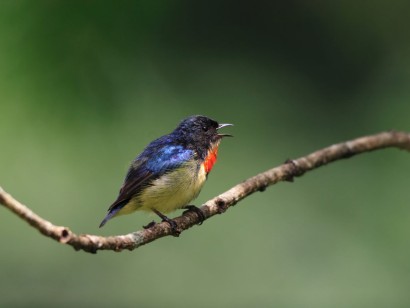Cambodia & South Vietnam
Highlights
Highlights
- Rich and diverse birdlife incorporating avifaunas of the Himalayas, Malaysia and China!
- Lots of very special, unique endemic birds, and fascinating mammals
- Several good national parks in both countries
- Utterly spectacular historical ruins at Angkor Wat
Map
Map
Overview
Tour Overview
Vietnam has a rich and diverse birdlife incorporating avifaunas of the Himalayas, Malaysia and China, with 850 species of birds and more endemics than any other country in south-east Asia.
Habitats range from the enormous deltas, to fine beaches, extensive paddy-fields, lowland and highland lush rainforests, and rhododendron-covered peaks rising to over 3000 metres. Our tour covers south of this fascinating country, taking in the superb National Parks of Cat Tien and its lowland forests and wetlands, as well as Di Linh and the still extensive forests of the Da Lat plateau at 2000 metres on the Southern Annam Highlands where
This time of year finds the country at its best, the climate mostly cool, dry and enjoyable, winter birds still present and resident ones gearing up for breeding.
Cambodia is covered with deciduous dipterocarp forests that once were more widespread across much of Indochina and Thailand; currently, the Northern and Eastern Plains of Cambodia form the largest remaining contiguous block of this unique and critically important habitat. Visiting several sites in Cambodia, we have several chances to see White-shouldered and Giant Ibis, as well as Bengal Florican, Painted Stork, Greater Adjutant, Mekong Wagtail and critically endangered Irriwaddy Dolphin, plus the astonishing temples and ruins of Angkor Wat! Our Cambodia and South Vietnam birding tour is an amazing adventure!
Dates & Prices
DATES & PRICES
What's Included
What's Included
Tour Price Includes
- One internal flight included
- Accommodation excellent to moderate, comfortable and adequate hotels and lodges
- 6 to 12 participants with an Eagle-Eye Tours leader and a local guide throughout
- All meals included
Tour Price Does Not Include
- Flights to and from start/end
- Travel Insurance
- Items of a personal nature
Gallery
Gallery





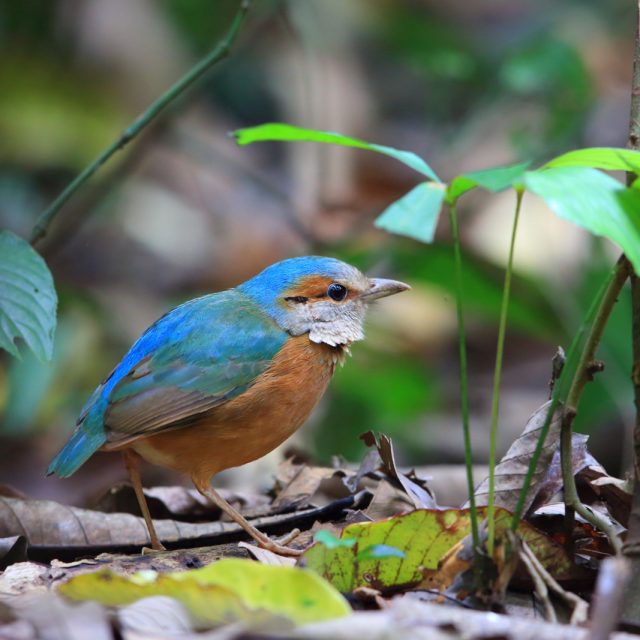
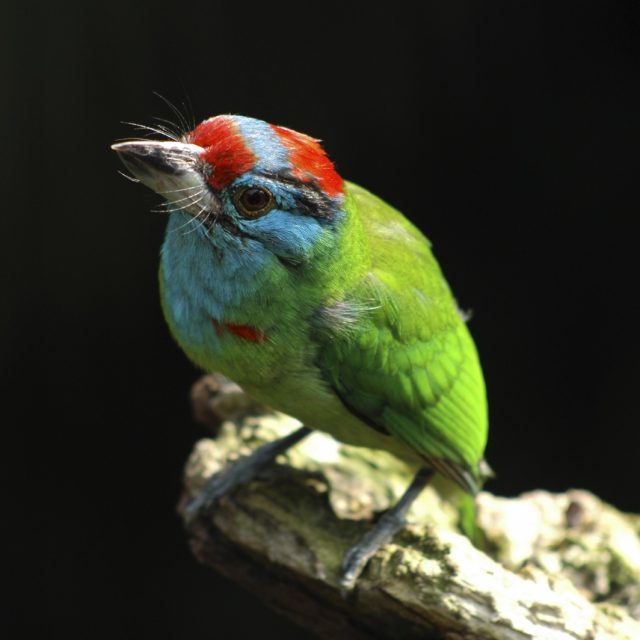

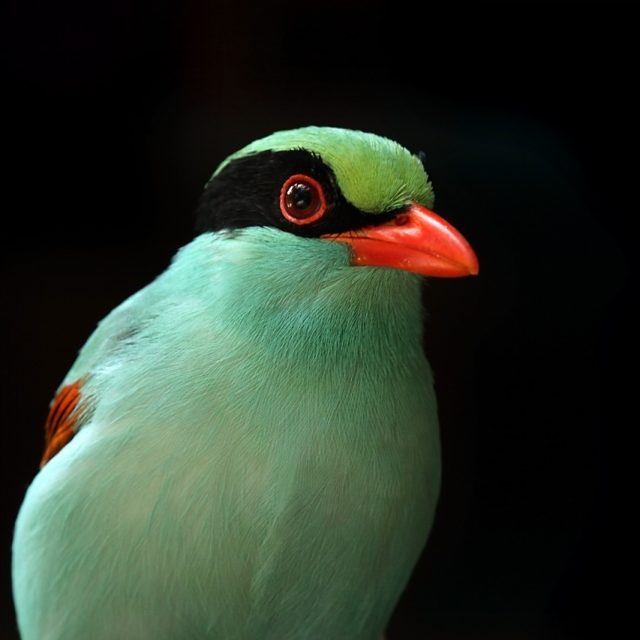
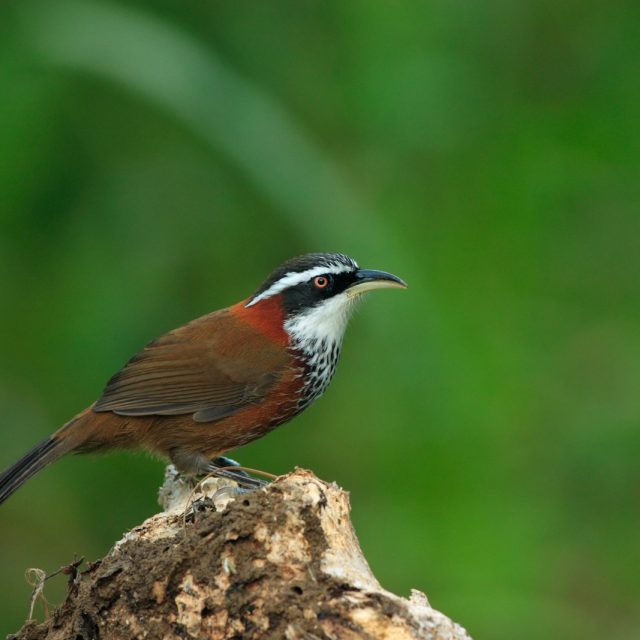



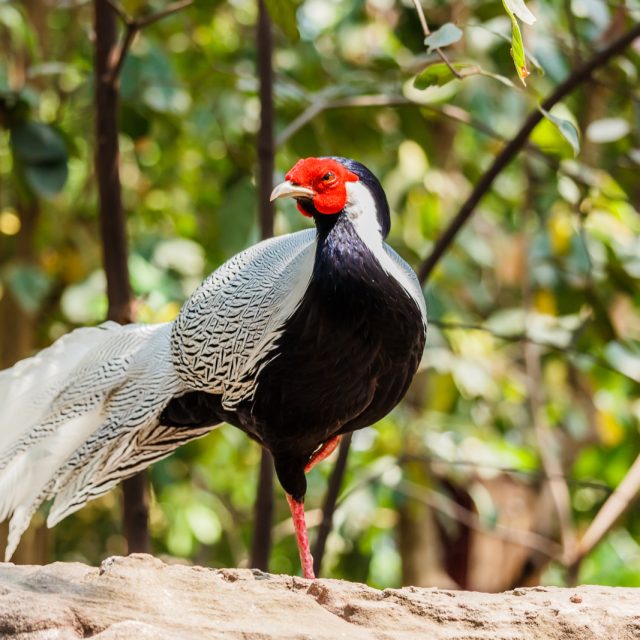
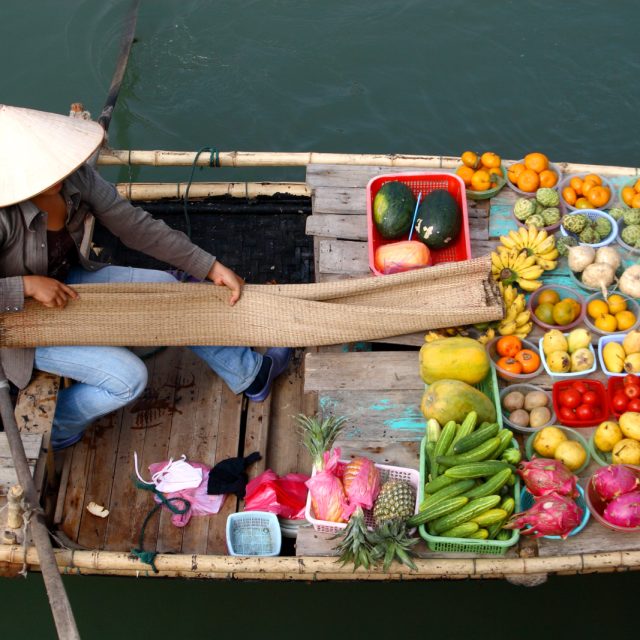


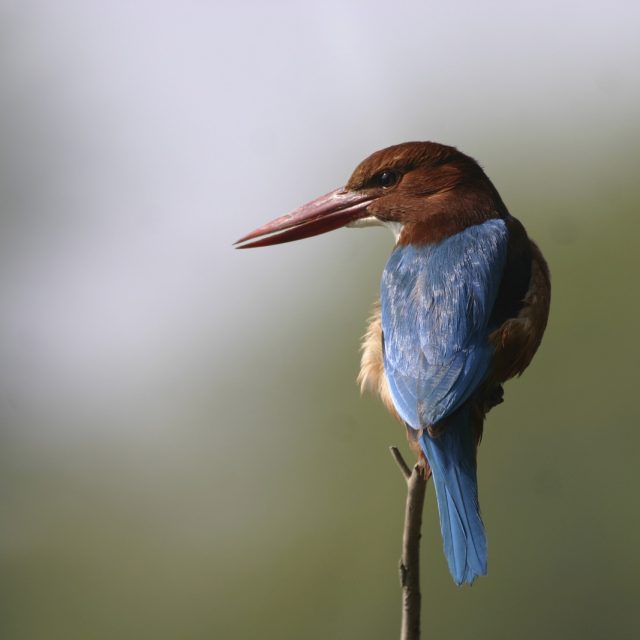
Itinerary
Itinerary
Day 1: Arrival in Siem Reap, Cambodia
Our Cambodia & South Vietnam tour begins in Siem Reap. Overnight in Siem Reap.
Day 2: Angkor Wat
Today we will visit Angkor Wat, one of the most important archaeological sites in Southeast Asia, and together with neighbouring temples form the remains of different capitals of the Khmer Empire, from the 9th to the 15th century. As we revel in the historical grandeur of these UNESCO World Heritage sites, we will also look for birds – moats and forest patches within the temple walls can hold special birds such as Oriental Darter, Alexandrine Parakeet, White-throated Rock-thrush, Forest Wagtail, and much more. Night in Siem Reap.

Days 3: Siem Reap to Tmatboey
We start our day with some morning birding in the grasslands alongside Tonle Sap in search of Bengal Florican and a large number of wintering migrants. Possibilities include Eastern Marsh and Pied Harriers and we could even come across some waterbirds, including Sarus Crane, Lesser Adjutant and Painted Stork.
Mid-morning will see us heading north into the remote Preah Vihear province. This province is home to some of the rarest species in south-east Asia. The landscape is dominated by open, dry savanna interspersed with extensive tracts of deciduous forest along the waterways. We shall arrive into our comfortable guesthouse in the mid-afternoon in time for some late afternoon birding. Night at Tmatboey Ecolodge or similar.

Day 4: Around Tmatboey
During our day here we will walk through the open forest in search of small waterholes, or ‘trapeangs’, which offer us the best chance of locating the near-mythical Giant and White-shouldered Ibises, which use these trapeangs to feed. In between visiting these waterholes good numbers of other species will be encountered, including an array of wintering passerines found in large feeding flocks.
Up to sixteen species of woodpecker make this forest their home, including the spectacular Black-headed, gigantic Great Slaty and striking White-bellied woodpeckers. Other localized species here include the Burmese Shrike, Yellow-footed Green Pigeon, Rufous-winged Buzzard, four species of prinia including the localized Brown Prinia, Blossom-headed, Red-breasted and Alexandrine Parakeets, Indochinese Cuckooshrike, Indochinese Bushlark, Golden-fronted Leafbird, Black-hooded Oriole and White-rumped Falcon.
For those with some energy in the evening, night-birding is often productive; Spotted and Brown Wood Owls, Collared and Oriental Scops Owl, Brown Fish Owl and Spotted Owlet all being possible, along with Savanna and Large-tailed Nightjars. Night at Tmatboey Ecolodge or similar.
Day 5: Tmatboey to Siem Reap
We have a final morning birding this rich ecosystem of open woodlands, seasonally-wet grasslands, deciduous dipterocarp forest and scattered wetlands – some of the best remaining examples in Southeast Asia. We return to Siem Reap in the afternoon. Overnight in Siem Reap.

Day 6: Birding Tonle Sap
We leave early in the morning for a full day of birding at Tonle Sap, visting Peak Toal Sanctuary, where we look for the Greater Adjutant, Milky Stork and many other waterbirds before returning to Siem Reap. Overnight in Siem Reap.
Day 7: Birding Ang Trapeang Thmor reserve
We will spend a full day exploring Ang Trapeang Thmor, a nature reserve dating from the Khmer Rouge era that is a patchwork of grasslands, dry forest and rice fields. The reserve is an important wintering site for the endangered eastern population of Sarus Crane.
Other highlights of Ang Trapeang Thmor are the breeding colonies of Spot-billed Pelican and Painted Stork, and often large numbers of waterfowl, including Spot-billed Duck, Cotton Pygmy Goose, Garganey, Black-backed Swamphen, and Pheasant-tailed and Bronze-winged Jacanas.
The wide-open spaces are also good for raptors such as Greater Spotted Eagle, rarely Imperial Eagle, Black Baza, and harriers while owls such as Spotted Owlet, Barn Owl and Spotted Wood-owl roost in the scattered copses. Overnight in Siem Reap.

Day 8: Morning birding and flight to Vietnam
We have a final morning of birding around Siem Reap. You may also have time to make your way back to Angkor Wat if you wish to spend more time there. We have an afternoon or evening flight to Ho Chi Minh city. Night in Ho Chi Minh city.
Day 9: Mekong delta tour and drive to Cat Tien National Park
We depart early in the morning to the Mekong coast for shorebirds and a special quest for the critically endangered Spoon-billed Sandpiper that winters in this area. After lunch we will begin our drive north towards the renowned Cat Tien National Park.
We will arrive in Cat Tien National Park in the late afternoon and will have a few hours to bird there before evening. We will spend the night at the Cat Tien National Park Headquarters Guesthouse.

Days 10 & 11: Birding in Cat Tien National Park
The premier national park in South Vietnam, Cat Tien National Park is located in Cochinchina in the Da Lat foothills. As the largest remaining tract of lowland tropical forest in southern Vietnam, it boasts an impressive mosaic of forest and seasonal wetlands that largely escaped the defoliants used in the Vietnam War. We will spend the next two days birding this park including many different habitat types found within the park. We will bird the seasonal wetlands, mostly from the edge, as well as the many excellent forest trails. We will also enjoy birding from the roads throughout the national park.
We will seek out the endemic Germain’s Peacock-Pheasant on the park’s jeep tracks and forest trails, where we will also encounter other spectacular birds such as Siamese Fireback, Green Peafowl and Scaly-breasted Partridge, as well as the endemic Grey-faced Tit-Babbler. We will try a few reliable spots for Blue-rumped Pitta and Bar-bellied Pitta. We will also look for Orange-necked Partridge, Wreathed Hornbill, Pale-headed Woodpecker, Black-and-buff Woodpecker, Black-and-red Broadbill, Banded Broadbill, Dusky Broadbill and Grey-faced Tit Babbler. We will really start to build our trip list with a host of other southeast Asian species including various broadbills, woodpeckers, barbets, hornbills.
When it is warm around midday, the birding will slow down. We will use this part of the day for the bulk of the driving between sites, but it will also be an opportunity to have lunch and to catch up on any needed sleep. Nights at the Cat Tien National Park Headquarters Guesthouse.

Day 12: Cat Tien to Di Linh and Nui San Pass
After a relatively short birding in the morning and then breakfast, we will drive to Di Linh to search for several species which are easier to locate here at the Nui San Pass. Our primary targets will be the impressive Blue Pitta and Rusty-naped Pitta. We will also look for Spotted Forktail, White-cheeked Laughingthrush, Black-hooded Laughingthrush, Orange-breasted Laughingthrush, Vietnamese Cutia and Black-crowned Parrotbill (split from the more widespread Grey-headed).
We will spend the night at Ivoryfalls Villa Resort (or similar) in Di Linh.

Day 13: Birding Nui San Pass and en route to Da Lat
An early morning return to the Nui San Pass will give us a chance for the elusive Green Cochoa.
After we finish birding at Nui San Pass, we will drive up to the Langbian Plateau towards the evocative hill resort of Da Lat. We will stop en route to bird around some interesting patches of habitat, and to admire several attractive waterfalls. Da Lat is situated at a delightfully cool elevation of 1500 meters (about 4,500 feet) in a temperate region dotted with lakes and waterfalls. The cooler weather and the surrounding forest, including various native pine woodlands, offer a good opportunity for birding. If cooler weather holds for mid-day, we will be able to bird more of the day here.
We will spend the night in Da Lat.

Days 14 & 15: Birding Da Lat
Da Lat sits on a plateau at 1,475 m (4,921 ft) and is known as the “City of Eternal Spring” for its comfortable temperate climate. The region’s landscape is picturesque – dotted with lakes and surrounded by woodland full of native pines. The distinct weather and habitats make the Da Lat Plateau a biodiversity hotspot, recognized by Birdlife International as an Endemic Bird Area (EBA) – one of five in Vietnam.
We will spend the next two days exploring the Da Lat Plateau. The plateau includes the 2,169 meter (7,100 foot) Mount Langbian, cloaked with evergreen forest right up to its peak. The footpaths leading through the forest and other habitats here do get progressively steeper. Our efforts at birding the forests should reward us with views of the spectacular endemic Collared Laughingthrush, Yellow-billed Nuthatch, Vietnamese Cutia, Black-crowned Fulvetta (split from Rufous-winged Fulvetta) and the Grey-crowned Tit (split from Black-throated Tit). We will also find a number of other Asian and wintering birds as well.
Closer to Da Lat is the Ta Nung Valley, famous for the recently re-discovered Grey-crowned Crocias, which is regularly encountered here. Other endemics, such as Black-hooded Laughingthrush, Orange-breasted Laughingthrush and Vietnamese Greenfinch are possible as well.
Over the next two days, we will be able to put in quite a bit of birding, and the potential here for new trip birds is excellent. Some of the other species we hope to find here include Bar-backed Partridge, Silver Pheasant, Red-vented Barbet, Annam Barbet, Red-headed Trogon, Long-tailed Broadbill, Wedge-tailed Green Pigeon, Mountain Imperial Pigeon, Rufous-bellied Eagle, Jerdon’s Baza, Rusty-naped Pitta, Blue Pitta, Burmese Shrike, Indochinese Green Magpie, Eurasian Jay, Slender-billed Oriole, Maroon Oriole, White-throated Rock Thrush, Green Cochoa, Rufous-browed Flycatcher, Blue-and-white Flycatcher, Mugimaki Flycatcher, Snowy-browed Flycatcher, Little Pied Flycatcher, Large Niltava, Lesser Shortwing, White-tailed Robin, Spotted Forktail, Yellow-cheeked Tit, Humes’s Treecreeper (split from Brown-throated Treecreeper), Grey-bellied Tesia, White-spectacled Warbler, Chestnut-crowned Warbler, Black-hooded Laughingthrush, White-cheeked Laughingthrush, Orange-breasted Laughingthrush, White-browed Scimitar Babbler, Streaked Wren Babbler, Eyebrowed Wren Babbler, Pygmy Wren Babbler, Rufous-capped Babbler, Trilling Shrike-babbler (aka Chestnut-fronted Shrike-Babbler), Dalat Shrike-babbler (split from White-browed Shrike-babbler), Blue-winged Minla, Black-crowned Fulvetta, Indochinese Fulvetta (difficult here), Rufous-backed Sibia, Black-headed Sibia, Black-crowned Parrotbill, Mrs. Gould’s Sunbird, Streaked Spiderhunter, Red Crossbill. Nights in Da Lat.

Day 16: Transfer to Ho Chi Minh City
We will spend the morning birding around Da Lat. In the afternoon, we will transfer to Ho Chi Minh City, making birding stops along the way. Overnight in Ho Chi Minh city.
Day 17: Departure, Ho Chi Minh city
Our Cambodia & South Vietnam birding tour ends today. You can depart anytime today.
What to Expect
What to Expect
Overview
The Cambodia & South Vietnam tour is a fast paced birding tour. You can expect some pretty early mornings and long days in the field. Our time at Angkor Wat will be focused on birding. If Angkor Wat is a highlight for you, consider arriving a day or two early to explore it’s vast scale and rich history further at your own pace.
Food
We like to go birding before breakfast, since it is best to begin birding at daybreak, and come back to eat breakfast. We take most lunches at the hotel or a cafe, but will sometimes have a picnic style, to maximize our time in the field. Dinner is usually at the lodge or a nearby restaurant. Each evening after dinner we compile the day’s checklist, review the day’s activities, birds, mammals and other observations, and plan the next day’s activities.
Accommodation
Accommodation ranges from basic hotels to comfortable lodges. All accommodations have private bathrooms with hot water.
Walking
The walking on this tour is mostly easy, with one moderately difficult walk up the trail on Mt Langbian, which becomes quite steep, however we take it very slowly with frequent stops.
Driving
Most days have a small to moderate amount of driving.
Climate
We will encounter a range of climatic conditions during our tour. In Vietnam, the lowlands will be mostly hot, dry and sunny, and certainly humid, with showers in the afternoon. At higher altitudes in the south, conditions range from warm to cool. Overcast weather is not infrequent and it may rain. Cambodia is generally hot and humid with high temperatures approaching 32° C (90° F) and woodlands are generally open to the sun.
Featured Wildlife
Featured Wildlife
While we cannot guarantee sightings of the birds or mammals listed below, we believe that encountering these species is quite likely during this tour.
- Germain’s Peacock-Pheasant
- Collared Laughingthrush
- Gray-crowned Crocia
- Blue-rumped Pitta
- Black-headed Parrotbill
- Vietnamese Cutia
- Ratchet-tailed Treepie
- Red-vented Barbet
- Silver Pheasant
- Siamese Fireback
- Short-tailed Scimitar-Babbler
- Bengal Florican
- Giant and White-shouldered Ibises
- Delacour Langur
- Irrawady Dolphin
Past Tour Checklists
Past Tour Checklists
View the list of birds and other wildlife we encountered on our past tours.




